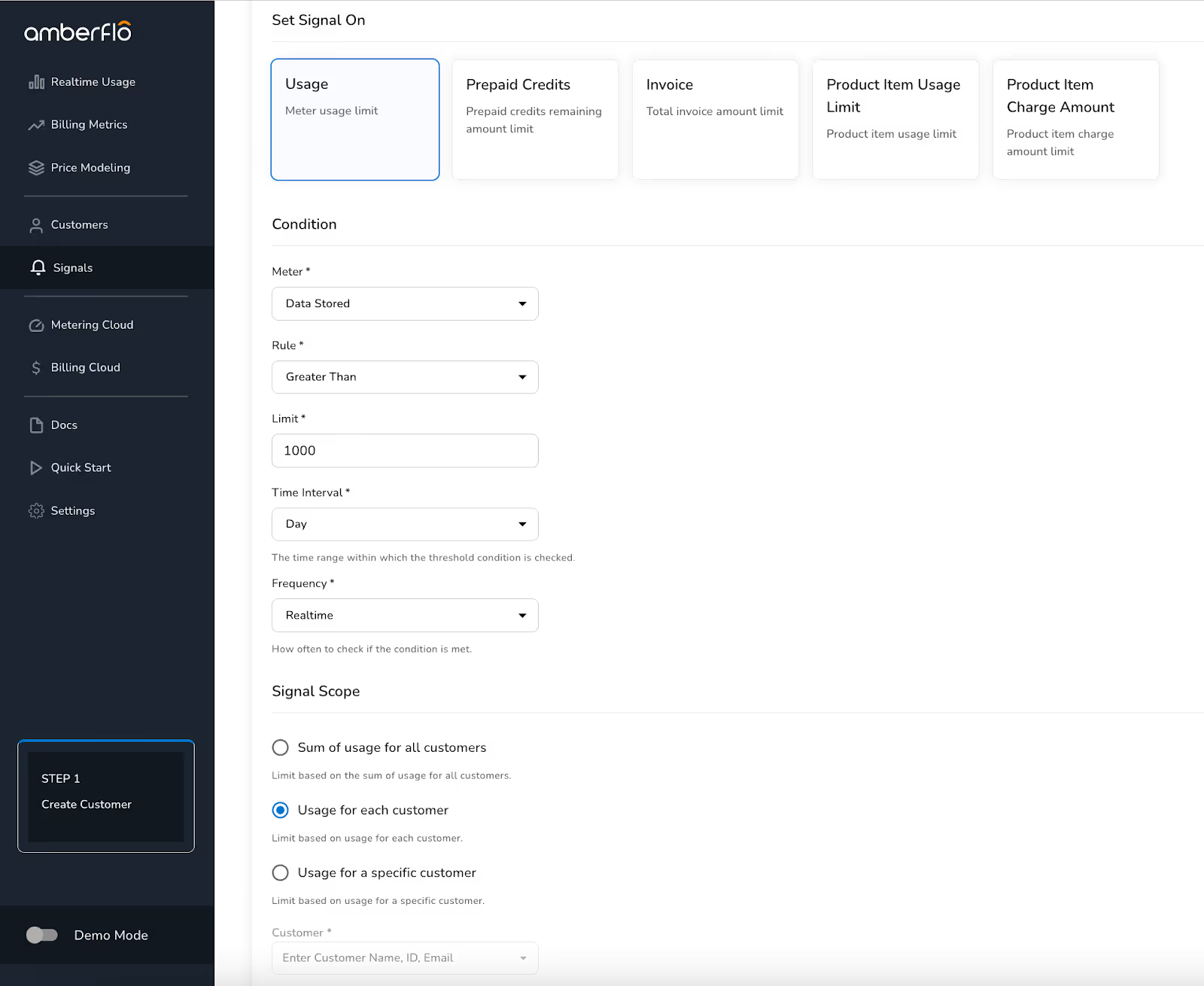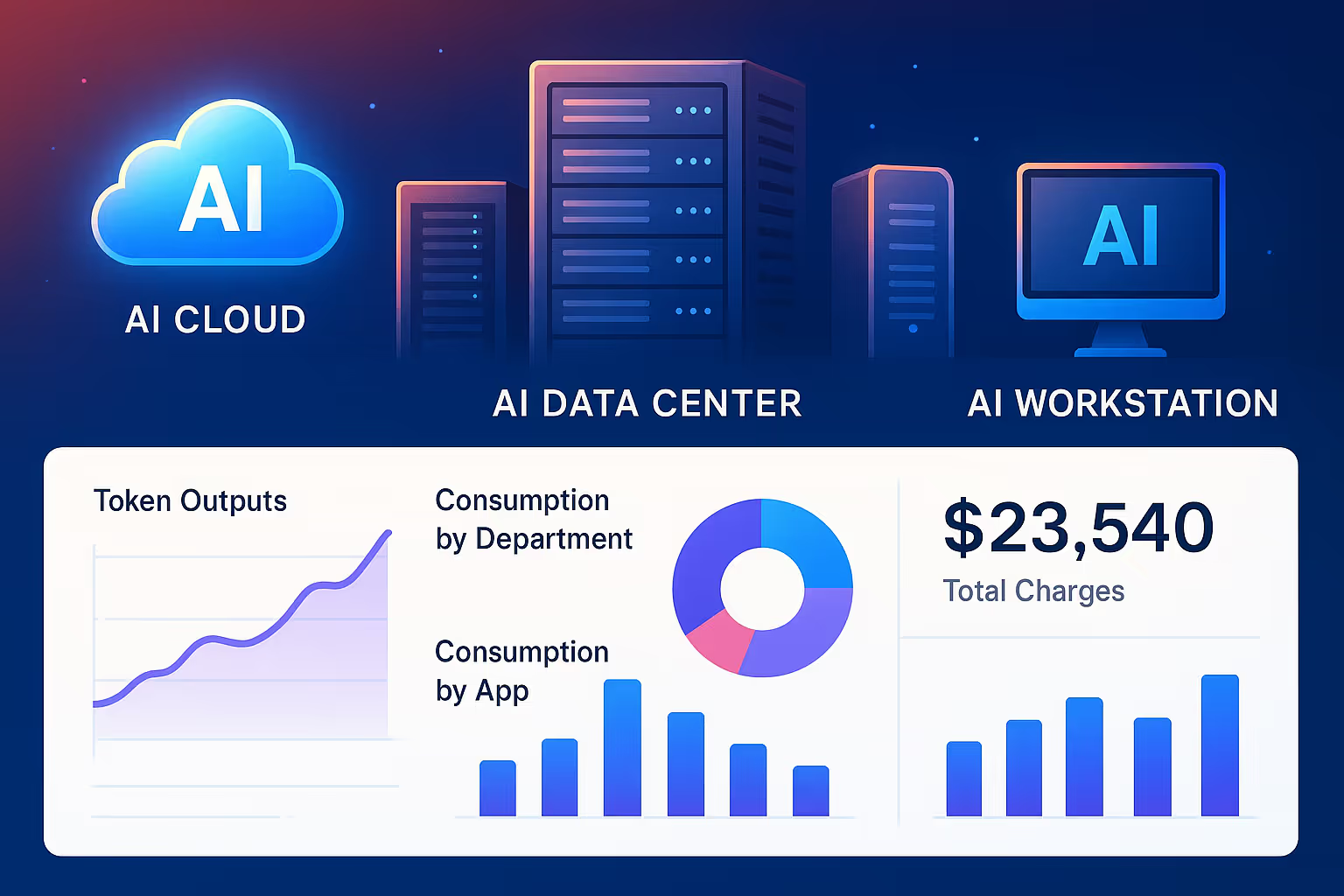One of the key requirements for a metering infrastructure that we hear during conversations with customers and prospects is the need for real-time visibility into what is being used by whom, when, and how is it trending. Customers want to know that usage is being tracked in real time, and that at any point they can use Amberflo dashboard for a specific customer or user’s metered usage.
A logical next step is to enable 24/7 visibility and actionability with this data that depends only on some set of conditions and does not require input from a user. With data being collected and aggregated in real time, customers must be able to take action just as rapidly.
On the usage-based billing side, a similar need exists. Since usage is dynamic from one billing period to the next, some variability in spend can exist. Organizations require 24/7 visibility into usage-based spends with the ability to take action such as throttle back usage or change to a lower priced tier once a predefined spend threshold has been met.
Amberflo Signals™
Track Usage and Billing limits in real time.
We accomplish this with Amberflo Signals™. Signals can be applied to both usage and billing data with fine-grained controls for defining rules and conditions.The default signal is delivered via email and via a Webhook (that you can configure to get notifications directly into an application of your choice and take automated action).
Amberflo allows you to create Signals across multiple dimensions:

- Usage
Notify based on meter usage (ie. notify administrator when the total volume of data shared over a network surpasses 1TB)
- Prepaid Credits
Notify based on the amount of Prepaid Credits remaining (ie. notify a customer when their Prepaid Credits balance is below $1,000)
- Invoice
Notify based on the total invoice amount (ie. notify a customer when their invoice amount surpasses the committed monthly spend)
- Product Item Usage Limit
Notify based on the usage of a particular product item (ie. notify when a customer surpasses 100 unique user logins so a salesperson can reach out to upgrade to a higher product tier)
- Product Item Charge Amount
Notify based on the billed amount for a particular product item (ie. notify when the invoice amount for cloud compute runtime surpasses $5,000 in one month so the customer can throttle back usage until the next month)
Set Signals across Users and Customers
In addition, Amberflo allows you to define the scope of any signal in three ways:
- Each customer separately
(ie. if signal rule is true for any customer, notify),
- Entire customer base
(ie. suppose the signal rule is ‘Greater than 1000 API calls’, then once the 1001st call was made by any customer - whether it was that customer’s 1st, 100th, or 1001st, notify),
- Applied to a specific customer
(ie. if signal rule is true for Customer X, notify).
Internal Teams are automatically informed
Sales, Marketing, Finance to take proactive action
By default, Signals are delivered as an email message; the recipient list is configurable so all relevant stakeholders can be alerted easily and for no additional cost. In a usage-based business, it is a common best practice to have the salesperson and customer success team included with usage alerts as well as billing alerts to ensure that all stakeholders are receiving the most complete view of customer usage and activity.
Users and Customers are automatically informed
Signals can also be made available to customers as part of the Usage and Billing Portal. This allows customers to create their own Signals based on data in Amberflo. This allows customers to create 24/7 visibility into their own usage and spend and to build in controls to ensure their spend never becomes unmanageable.
If there has ever been a fair criticism of usage-based pricing, it is the usage variability and corresponding and unpredictability to revenue/spend for both customers and providers alike. At Amberflo we have asserted that this isn’t a valid criticism of the pricing model itself but rather a symptom caused by a lack of adequate tooling. With Signals we are empowering customers with the tooling needed to create visibility and proactively control spend in a usage-based business.
The next step with Alerts and notifications is to make them actionable and build for automation. In Amberflo, alerts can be configured to throw a webhook to enable downstream automation in third-party systems.
Some example use cases may include tracking usage in a trial period and throwing an alert when free usage is exhausted. This alert may be sent to notify an account manager to engage, or you could build a direct action into your product such as blocking further usage until a new paid plan is selected.
Building on this concept with other alert types, create real-time alerts to track progress towards a quota for total revenue or even to track usage and adoption targets. Alerts can be created for usage and revenue objects as well as prepaid credits.





.svg)

